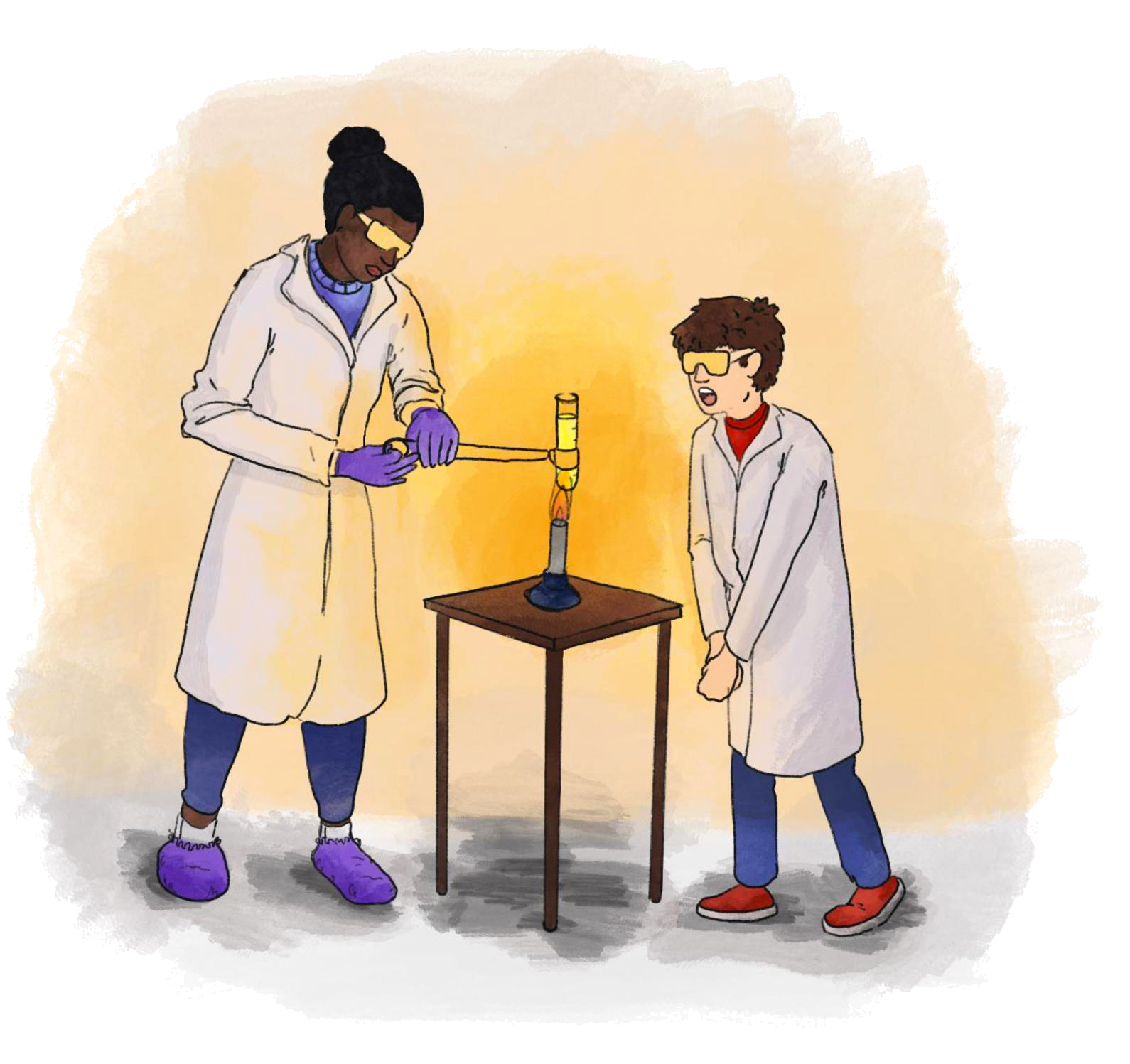
Marc Boudreaux
For the past week, three Yale graduate students have visited libraries around Connecticut to discuss with local residents how simple interactions can create complex systems of life.
The visits are part of an ongoing outreach project called Science in the News that gives Yale graduate students the opportunity to showcase their areas of expertise in Connecticut communities, said Emilee Shine GRD ’20, a member of the Science in the News team. This February, three students from the Graduate School of Arts and Sciences brought their presentation, titled “Finding Patterns in Chaos, How Simple Rules Form Complex Behavior,” to libraries in New Haven, New Canaan and Guilford.
The trio’s Guilford presentation drew a crowd of nearly 40 residents to the Guilford Free Library for a series of interconnected talks late Thursday evening. The three Yale speakers drew on their backgrounds in the fields of mechanical engineering, genetics and psychology to teach attendees about the concept of emergence theory, which postulates that a complex system can be explained through the system’s individual elements and the interactions among them. The speakers incorporated creative multimedia elements to make their points, from short animations to clips from popular television shows.
“Science can sometimes just be a lot of big words that only the people talking about it understand,” said Ariah Tucci, a high school student and aspiring scientist who attended the presentation with her father. “They used media and humor, which keeps you engaged and keeps you listening but also helps you understand all the big words.”
The speakers — John Treado GRD ’22, Lauren Gonzalez GRD ’21 and Alyssa Arre GRD ’23 — took turns addressing the topic of emergence from distinct angles related to their fields of study.
Treado, a mechanical engineering student, opened his talk with a short clip of a flock comprising thousands of starlings flying in tandem. Together, the birds created the illusion of a large black ribbon waving in the sky. The birds, Treado explained, interact and communicate only with those around them. Together, those interactions form a massive system, achieving emergence.
Treado went on to describe other, perhaps more relatable examples of emergence, from the ambiguous causes of traffic jams to the peculiar shapes of snowflakes. Treado concluded his talk with the remark that “life itself is an emergent thing.”
Gonzalez, a genetics student, employed the concept of emergence on a cellular level, in which cell differentiation is responsible for the creation of whole and complete organisms. Gonzalez paired her presentation with a short video depicting a developing frog embryo, foregoing complicated genetic terminology in favor of a fascinating visual aide.
Shine said the groups tried to keep the presentations accessible and to avoid any unnecessary jargon that may alienate audience members — many of whom have not studied science since high school.
“You’ll notice that we call proteins ‘molecular machines,’” Shine said. “We use a little clip art of scissors and hammers, kind of showing their function, rather than talking about macromolecular structures with alpha and beta sheets.” The latter strategy, she said, would “not go over well.”
The organization selects speakers who can present clearly and compellingly on topics about which they are passionate, Shine said. While the Science in the News team picks the general theme, she added, the specifics of the presentations are left up to the students.
Psychology student Arre gave the final presentation of the evening: an overview of emergence’s social components, many of which help dictate individuals’ roles in their community. Arre focused her talk on the complex societies formed by leafcutter ants — the only nonhuman animal that farms for sustenance. Each ant plays a role in the colony, taking care of young or gathering leaves to feed a fungus they cultivate and consume. Arre drew comparisons between ant society and human society, pointing out the ways both species follow implicit behavioral rules.
To wrap up her presentation, Arre played a few clips from the popular television show “Candid Camera” to support her claim that social conformity is a form of emergence. In one clip, a confused prank victim spins around in an elevator, simply to match the inexplicable behavior of the paid actors around him.
Arre told the News that Science in the News was a fun way for scientists to present their work to people who may be otherwise unfamiliar with the scientists’ fields of study.
“I think this is great for us, as scientists,” Arre said. “I don’t think scientists communicate enough, so it’s good practice to work on communicating and distilling big topics into something that’s both consumable and interesting.”
Cynthia Eichholtz, an attendee, said she appreciated the way the speakers drew connections across the natural world, from the busy operations of leafcutter ants to human social interactions.
Science in the News visits a few locations with a new set of talks each spring, Shine said. The Guilford Free Library has been an especially enthusiastic supporter of the event, she added, a fact reflected in the event’s especially large turnout.
The Guilford Free Library first opened its doors to the public in 1934.
Maya Chandra | maya.chandra@yale.edu







